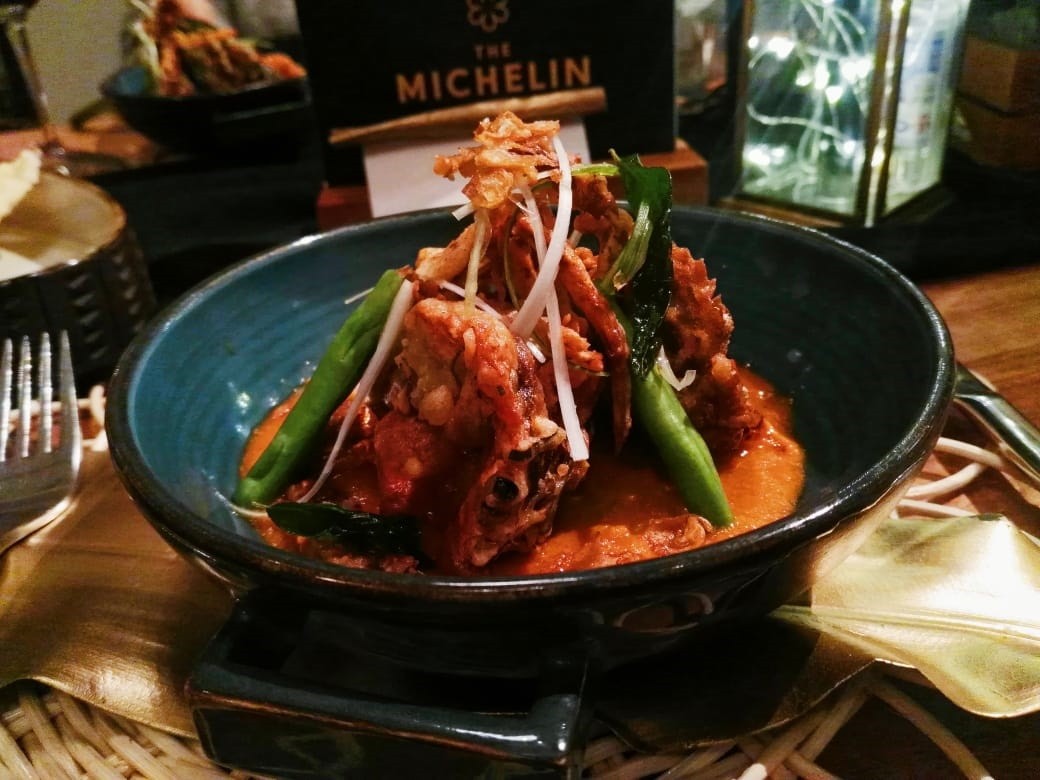Popular Reads
Top Results
Can't find what you're looking for?
View all search resultsPopular Reads
Top Results
Can't find what you're looking for?
View all search resultsWine and Asian food matchmaking: It’s all in the sauce
Change text size
Gift Premium Articles
to Anyone
W
hen entertaining guests, serving wines to pair with the food causes great excitement. While this kind of pairing can be tricky, especially with Indonesian food, there are ways to make it easy and fun.
Wolf Blass, an Australian brand that has been producing wines for 65 years, recently held a wine-pairing event in collaboration with The Michelin Guide. The event took place at Kaum Indonesian restaurant in Central Jakarta.
Apart from providing carefully selected wines and the food to match, Wolf Blass and Kaum provided the idea of a wine pairing that could be done at home with guests to begin the house party. This idea included replacing the bread and butter commonly found in Western-style feasts with Indonesia’s own crackers and sambal (chili sauce).
Wolf Blass, The Michelin Guide and Kaum presented three different wines and a set menu in which each course was cooked or served with distinctive sauces and sambal. Furthermore, in order to decide which wine to pair with which dish, the three hosts invited guests to try eating gendar rice crackers with different sauces and sambal, and pair the combination with each wine.
Sam Stephens, Wolf Blass brand ambassador, told The Jakarta Post and other guests to smell and taste the wines, which were a 2016 Gold Label Chardonnay, 2016 Gold Label Cabernet Sauvignon and 2016 Gold Label Shiraz.
“First, familiarize yourself with the wine, because wine is personal,” said Stephens, explaining that the chardonnay is made of grapes from Adelaide, a cool climate region in Australia, which is fresh and giving an expressive style with just a little touch of oak to it. Meanwhile, the cabernet sauvignon from Coonawarra is aromatic and herbaceous with a minty characteristic, and finally the shiraz from Barossa, which has a much warmer climate, is more vibrant, fruit-driven and spicy, replicating quite a lot of the ingredients of the sauces to be served.
The wines can be paired with such sauces as curry sauce, Toraja-style pantollo pamarrasan sauce, Cantonese-style hoisin sauce and Indonesia’s own sambal terasi (shrimp paste).
Pantollo pamarrasan sauce is not a delicacy often found in Jakarta, but Kaum shared that it is made of keluwak (black nut), with ginger, red chili, shallots and garlic. Furthermore, Kaum also added special details to the hoisin sauce by replacing the commonly used fermented soy with red beans to give an Indonesian signature. As for the sambal terasi, the restaurant used shrimp paste from Bangka Island, after trying many different shrimp pastes from across Indonesia.
“With the sauces, the only thing I can recommend, is to focus on these three sauces first, before [going to the] sambal,” said Stephens.
We then worked our way between the three sauces, dipping the gendar into one sauce, taking and savoring a bite, and taking a sip of wine. It felt very natural to start from the curry sauce and pair it with the chardonnay, and voila! it was a match at the first sip.
Read also: Italian wine and tapas, a fine pair
Stephens suggested we revisit the wines and think about which combinations worked, but without too much trial and error it was obvious that the chardonnay matched the curry sauce and the sambal, while the cabernet sauvignon matched the hoisin sauce, and the shiraz matched the pantollo pamarrasan but then again, wine is personal and different people may like different combinations.
Now that the right pairing could be identified from the test with the sauce, we could go on to the dishes with which the sauces were served or cooked. As an example, Kaum used the curry sauce with crispy softshell crabs cooked in East Java-style mixed spices. It was easily a match with the chardonnay.
Other examples were glazed hoisin roast duck that matched with the cabernet sauvignon, and stir-fried beef in pantollo pamarrasan sauce that paired well with the shiraz.
Regardless of what wines and food were being presented, it was a journey to find the matching flavors that made the dining experience more meaningful. Furthermore, this partnership between a wine label and The Michelin Guide could be well on its way to changing the notion that wine does not go with Asian food.
Yodissen Mootoosamy, Southeast Asia general manager at Treasury Wine Estates, which markets and distributes Wolf Blass among other labels, said in a statement that the partnership would enable consumers to experience wine pairing with Asian food in many places in Southeast Asia, as well as Taiwan.











